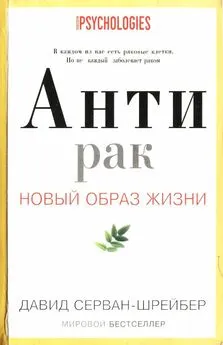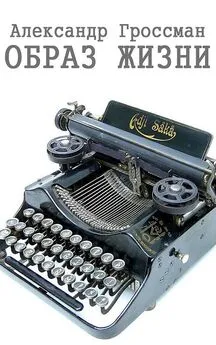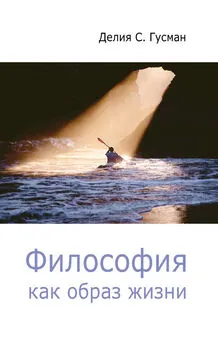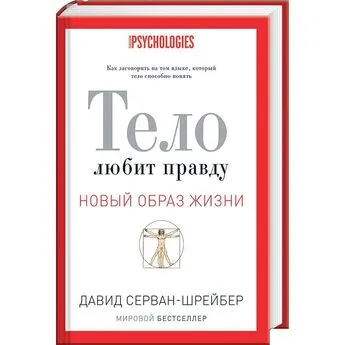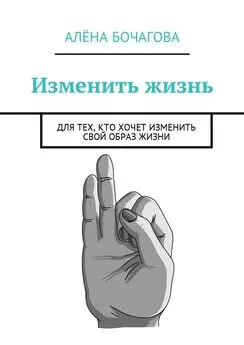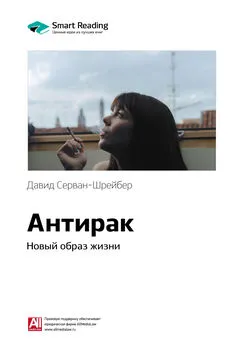Давид Серван-Шрейбер - Антирак. Новый образ жизни
- Название:Антирак. Новый образ жизни
- Автор:
- Жанр:
- Издательство:РИПОЛ классик
- Год:2010
- Город:Москва
- ISBN:978-5-386-02111-5
- Рейтинг:
- Избранное:Добавить в избранное
-
Отзывы:
-
Ваша оценка:
Давид Серван-Шрейбер - Антирак. Новый образ жизни краткое содержание
Антирак. Новый образ жизни - читать онлайн бесплатно ознакомительный отрывок
Интервал:
Закладка:
11. Berkman, L. F., and S. L. Syme, “Social Networks, Host Resistance, and Mortality: A Nine-Year Follow-Up Study of Alameda County Residents,” American Journal of Epidemiology 109, no. 2 (1979): 186-204.
12. Berkman, L. F., L. Leo-Summers, and R. I. Horwitz, “Emotional Support and Survival After Myocardial Infarction: A Prospective, Population-Based Study of the Elderly,” Annals of Internal Medicine 117, no. 12 (1992): 1003-9.
13. Hoffman, J., “Doctors’ Delicate Balance in Keeping Hope Alive,” New York Times , December 24, 2005.
Глава 11
1. Field, T., S. M. Schanberg, F. Scafidi, et al., “Tactile/Kinesthetic Stimulation Effects on Preterm Neonates,” Pediatrics 77 (1986): 654-58.
2. Schanberg, S., “Genetic Basis for Touch Effects,” in Touch in Early Development , ed. T. Field (Hillsdale, NJ: Erlbaum, 1994), 67-80.
3. Hernandez-Reif, M., T. Field, G. Ironson, et al., “Natural Killer Cells and Lymphocytes Increase in Women with Breast Cancer Following Massage Therapy,” International Journal of Neuroscience 115, no. 4 (2005): 495-510.
4. Hernandez-Reif, M., G. Ironson, T. Field, et al., “Breast Cancer Patients Have Improved Immune and Neuroendocrine Functions Following Massage Therapy,” Journal of Psychosomatic Research 57, no. 1 (2004): 45-52.
5. Field, T. M., “Massage Therapy Effects,” American Psychologist 53 (1998): 1270-81.
6. Tehard, B., C. M. Friedenreich, J.-M. Oppert, et al., “Effect of Physical Activity on Women at Increased Risk of Breast Cancer: Results from the E3N Cohort Study,” Cancer Epidemiology, Biomarkers & Prevention 15, no. 1 (2006): 57-64.
7. Meyerhardt, J. A., E. L. Giovannucci, M. D. Holmes, et al., “Physical Activity and Survival After Colorectal Cancer Diagnosis,” Journal of Clinical Oncology 24, no. 22 (2006): 3527-34.
8. Meyerhardt, J. A., D. Heseltine, D. Niedzwiecki, et al., “Impact of Physical Activity on Cancer Recurrence and Survival in Patients with Stage III Colon Cancer: Findings from CALGB 89803,” Journal of Clinical Oncology 24, no. 22 (2006): 3535-41.
9. Holmes, M. D., W. Y. Chen, D. Feskanich, et al., “Physical Activity and Survival After Breast Cancer Diagnosis,” JAMA 293, no. 20 (2005): 2479-86.
10. Giovannucci, E., Y. L. Liu, M. F. Leitzmann, et al., “A Prospective Study of Physical Activity and Incident and Fatal Prostate Cancer,” Archives of Internal Medicine 165 (2005): 1005-10.
11. Ornish, D., G. Weidner, W. R. Fair, et al., “Intensive Lifestyle Changes May Affect the Progression of Prostate Cancer,” Journal of Urology 174, no. 3 (2005): 1065-69.
12. Patel, A. V., C. Rodriguez, E. J. Jacobs, et al., “Recreational Physical Activity and Risk of Prostate Cancer in a Large Cohort of U.S. Men,” Cancer Epidemiology, Biomarkers & Prevention 14, no. 1 (2005): 275-79.
13. Nilsen, T. I. L., “Recreational Physical Activity and Risk of Prostate Cancer: A Prospective Population-Based Study in Norway (the HUNT Study),” International Journal of Cancer, 2006.
14. Bardia, A., L. C. Hartmann, C. M. Vachon, et al., “Recreational Physical Activity and Risk of Postmenopausal Breast Cancer Based on Hormone Receptor Status,” Archives of Internal Medicine 166, no. 22 (2006): 2478-83.
15. Barnard, R. J., J. H. Gonzalez, M. E. Liva, et al., “Effects of a Low-Fat, High-Fiber Diet and Exercise Program on Breast Cancer Risk Factors in Vivo and Tumor Cell Growth and Apoptosis in Vitro,” Nutrition and Cancer 55, no. 1 (2006): 28-34.
16. Irwin, M. L., “Randomized Controlled Trials of Physical Activity and Breast Cancer Prevention,” Exercise & Sport Sciences Reviews 34, no. 4 (2006): 182-93.
17. Abrahamson, P. E., M. D. Gammon, M. J. Lund, et al., “Recreational Physical Activity and Survival Among Young Women with Breast Cancer,” Cancer 107, no. 8 (2006): 1777-85.
18. Adams, S. A., C. E. Matthews, J. R. Hebert, et al., “Association of Physical Activity with Hormone Receptor Status: The Shanghai Breast Cancer Study,” Cancer Epidemiology, Biomarkers & Prevention 15, no. 6 (2006): 1170-78.
19. Mutrie, N., A. M. Campbell, F. Whyte, et al., “Benefits of Supervised Group Exercise Programme for Women Being Treated for Early Stage Breast Cancer: Pragmatic Randomised Controlled Trial,” British Medical Journal 334, no. 7592 (2007): 517.
20. Friedenreich, C. M., “Overview of the Association Between Physical Activity, Obesity and Cancer,” Eurocancer (Paris: John Libbey Eurotex, 2005).
21. Friedenreich, C. M., and M. R. Orenstein, “Physical Activity and Cancer Prevention: Etiologic Evidence and Biological Mechanisms,” Journal of Nutrition 132, no. 11, supp. (2002): 3456S-64S.
22. Barnard, Gonzalez, Liva, et al., “Effects of a Low-Fat, High-Fiber Diet and Exercise Program . . .”
23. Leung, P-S., W. J. Aronson, T. H. Ngo, et al., “Exercise Alters the IGF Axis in Vivo and Increases p53 Protein in Prostate Tumor Cells in Vitro,” Journal of Applied Physiology 96, no. 2 (2004): 450-54.
24. Barnard, R. J., T. H. Ngo, P-S. Leung, et al., “A Low-Fat Diet and/or Strenuous Exercise Alters the IGF Axis in Vivo and Reduces Prostate Tumor Cell Growth in Vitro,” Prostate 56, no. 3 (2003): 201-6.
25. Colbert, L. H., M. Visser, E. M. Simonsick, et al., “Physical Activity, Exercise, and Inflammatory Markers in Older Adults: Findings from the Health, Aging and Body Composition Study,” Journal of the American Geriatrics Society 52, no. 7 (2004): 1098-104.
26. LaPerriere, A., M. H. Antoni, N. Schneiderman, et al., “Exercise Intervention Attenuates Emotional Distress and Natural Killer Cell Decrements Following Notification of Positive Serologic Status of HIV-1 ,” Biofeedback and Self-Regulation 15 (1990): 229-42.
27. LaPerriere, A., A. Fletcher, M. Antoni, et al., International Journal of Sports Medicine , 12 supp., no. 1 (1991): S53-57.
28. Sood, A., and T. J. Moynihan, “Cancer-Related Fatigue: An Update ,” Current Oncology Reports 7, no. 4 (2005): 277-82.
29. National Cancer Institute, “Herceptin Combined with Chemotherapy Improves Disease-Free Survival for Patients with Early-Stage Breast Cancer,” 2005 (accessed at http://www.cancer.gov/newscenter/pressreleases/HerceptinCombination2005).
30. Bardia, Hartmann, Vachon, et al., “Recreational Physical Activity and Risk of Postmenopausal Breast Cancer Based on Hormone Receptor Status.”
31. Adams, Matthews, Hebert, et al., “Association of Physical Activity with Hormone Receptor Status.”
32. Meyerhardt, J. A., E. L. Giovannucci, M. D. Holmes, et al., “Physical Activity and Survival After Colorectal Cancer Diagnosis,” Journal of Clinical Oncology 24, no. 22 (2006): 3527-34.
33. Meyerhardt, J. A., D. Heseltine, D. Niedzwiecki, et al., “Impact of Physical Activity on Cancer Recurrence and Survival in Patients with Stage III Colon Cancer: Findings from CALGB 89803,” Journal of Clinical Oncology 24, no. 22 (2006): 3535-41.
34. Holmes, M. D., W. Y. Chen, D. Feskanich, et al., “Physical Activity and Survival After Breast Cancer Diagnosis,” JAMA 293, no. 20 (2005): 2479-86.
35. Giovannucci, E., Y. L. Liu, M. F. Leitzmann, et al., “A Prospective Study of Physical Activity and Incident and Fatal Prostate Cancer,” Archives of Internal Medicine 165 (2005): 1005-10.
36. Ornish, D., G. Weidner, W. R. Fair, et al., “Intensive Lifestyle Changes May Affect the Progression of Prostate Cancer,” Journal of Urology 174, no. 3 (2005): 1065-69.
37. Patel, A. V., C. Rodriguez, E. J. Jacobs, et al., “Recreational Physical Activity and Risk of Prostate Cancer in a Large Cohort of U.S. Men,” Cancer Epidemiology, Biomarkers & Prevention 14, no. 1 (2005): 275-79.
38. Nilsen, T. I. L., “Recreational Physical Activity and Risk of Prostate Cancer: A Prospective Population-Based Study in Norway (the HUNT Study),” International Journal of Cancer 2006.
39. Bardia, A., L. C. Hartmann, C. M. Vachon, et al., “Recreational Physical Activity and Risk of Postmenopausal Breast Cancer Based on Hormone Receptor Status,” Archives of Internal Medicine 166, no. 22 (2006): 2478-83.
40. Barnard, R. J., J. H. Gonzalez, M. E. Liva, et al., “Effects of a Low-Fat, High-Fiber Diet and Exercise Program on Breast Cancer Risk Factors in Vivo and Tumor Cell Growth and Apoptosis in Vitro,” Nutrition and Cancer 55, no. 1 (2006): 28-34.
41. Irwin, M. L., “Randomized Controlled Trials of Physical Activity and Breast Cancer Prevention,” Exercise & Sport Sciences Reviews 34, no. 4 (2006): 182-93.
42. Abrahamson, P. E., M. D. Gammon, M.J. Lund, et al., “Recreational Physical Activity and Survival Among Young Women with Breast Cancer,” Cancer 107, no. 8 (2006): 1777-85.
43. Adams, S. A., C. E. Matthews, J. R. Hebert, et al., “Association of Physical Activity with Hormone Receptor Status: The Shanghai Breast Cancer Study,” Cancer Epidemiology, Biomarkers & Prevention 15, no. 6 (2006): 1170-78.
44. Mutrie, Campbell, Whyte, et al., “Benefits of Supervised Group Exercise Programme . . .”
45. Friedenreich, “Overview of the Association Between Physical Activity, Obesity and Cancer.”
46. Beck, A., Cognitive Therapy and the Emotional Disorders (New York: International Universities Press, 1976).
47. National Institute for Clinical Excellence, Depression: The Management of Depression in Primary and Secondary Care, NICE Guideline, Second draft consultation (London, 2003).
48. Csikszentmihalyi, M., Flow: The Psychology of Optimal Experience (New York: Harper Perennial, 1991).
49. Kawano, R., “The Effect of Exercise on Body Awareness and Mood,” Dissertation Abstracts International: Section B—The Sciences and Engineering , vol. 59 (7-8), January 1999: 3387.
50. Woolery, A., H. Myers, B. Sternlieb, et al., “A Yoga Intervention for Young Adults with Elevated Symptoms of Depression,” Alternative Therapies in Health & Medicine 10, no. 2 (2004): 60-63.
51. Netz, Y., and R. Lidor, “Mood Alterations in Mindful Versus Aerobic Exercise Modes,” Journal of Psychology 137, no. 5 (2003): 405-19.
52. Sandlund, E., and T. Norlander, “The Effects of Tai Chi Chuan Relaxation and Exercise on Stress Responses and Well-Being: An Overview of Research,” International Journal of Stress Management 7 (2000): 139-49.
53. Li, F., P. Harmer, E. McAuley, et al., “An Evaluation of the Effects of Tai Chi Exercise on Physical Function Among Older Persons: A Randomized Contolled Trial,” Annals of Behavioral Medicine 23, no. 2 (2001): 139-46.
54. Jin, P., “Changes in Heart Rate, Noradrenaline, Cortisol and Mood During Tai Chi,” Journal of Psychosomatic Research 33, no. 2 (1989): 197-206.
55. Fletcher, G. F., G. J. Balady, E. A. Amsterdam, et al., “Exercise Standards for Testing and Training: A Statement for Healthcare Professionals from the American Heart Association,” Circulation 104, no. 14 (2001): 1694-740.
Глава 12
1. Groopman, J., “Dr. Fair’s Tumor,” New Yorker , October 26, 1998, 78.
2. “The War on Cancer Townsend Letter for Doctors and Patients,” April 2002. (Accessed May 29, 2007, at http://findarticles.com/p/articles/mi_m0ISW/is_2002_April/ai_84211149/pg_1.)
Читать дальшеИнтервал:
Закладка:
